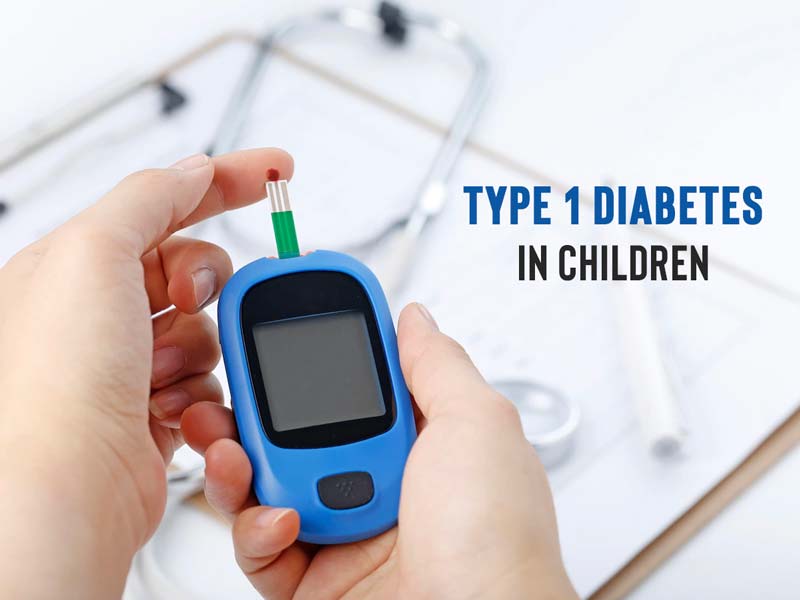
Type 1 diabetes in children is a condition in which a child's body no longer produces an important hormone that is the insulin. Type 1 diabetes is a condition where the pancreas cannot produce sufficient insulin to lower blood sugar levels. A child needs insulin to survive, so the naturally missing insulin needs to be replaced with injections or with an insulin pump into the body. Type 1 diabetes in children used to be known as juvenile diabetes or insulin-dependent diabetes.
Table of Content:-
Especially in the beginning, the diagnosis of type 1 diabetes in children can be overwhelming. It can and oftentimes cause several symptoms in children, such as tiredness, blurred vision, and increased thirst and hunger. It is noticed that a child takes ample time to get used to the diabetic situation. Therefore, it is necessary for the child to eventually learn how to give injections, count carbohydrates and monitor their blood sugar.
Unfortunately, there's no cure to treat type 1 diabetes in children, however it can be managed. Medical advances in blood sugar monitoring and insulin delivery have improved blood sugar management and quality of life for children suffering from type 1 diabetes.

Also Read: Diabetes Diet Chart: Manage Your Blood Sugar Level With This Low Carb Diet
Symptoms
The signs and symptoms of type 1 diabetes in children usually develop quickly due to the age factor, and may include:
- Increased thirst
- Frequent urination
- Extreme hunger
- Unintentional weight loss
- Blurred vision
- Fatigue
- Irritability or behavior changes
- Fruity-smelling breath
Causes
As mentioned above, the exact cause of type 1 diabetes is unknown. But in most people with type 1 diabetes, they live in a body which normally fights harmful bacteria and viruses and one day destroys insulin-producing cells in the pancreas. Genetics and environmental factors also appear to play a vital role in this process.
Once the islet cells of the pancreas are destroyed, a child produces very little or no insulin. Insulin performs the critical job of moving the glucose level from the bloodstream to the body's cells for energy.
Also Read: Erectile Dysfunction Common Among Men With Diabetes. Expert Shares Prevention Tips

Sugar enters our body's bloodstream when food is digested. Without enough insulin, sugar builds up in a child's bloodstream. This can cause life-threatening complications and be fatal if left untreated.
Other causes of Type 1 diabetes in children may include:
- Family history
- Genetics
- Race
- Certain viruses
Complications
Type 1 diabetes can cause severe damage to the major organs in your body. Keeping the blood sugar level close to normal most of the time can dramatically reduce the risk of many complications that the disease inherits. They may include:
- Heart and blood vessel disease
- Nerve damage
- Kidney damage
- Depression
- Eye damage
Prevention

There's currently no known way to prevent type 1 diabetes in any age whatsoever. However, this is a very active topic of research for health care professionals. The upside is that the antibodies associated with type 1 diabetes in children who have a high risk of the disorder can be detected months or even years before the first symptoms of type 1 diabetes appear.
Therefore, one may help a child prevent diabetes complications by:
- Working with the child in maintaining a good blood sugar control as much as possible
- Teaching the child importance of eating a healthy diet
- Participating in regular physical activity with the child
- Scheduling regular visits with the child's diabetes health care professional
Also watch this video
How we keep this article up to date:
We work with experts and keep a close eye on the latest in health and wellness. Whenever there is a new research or helpful information, we update our articles with accurate and useful advice.
Current Version